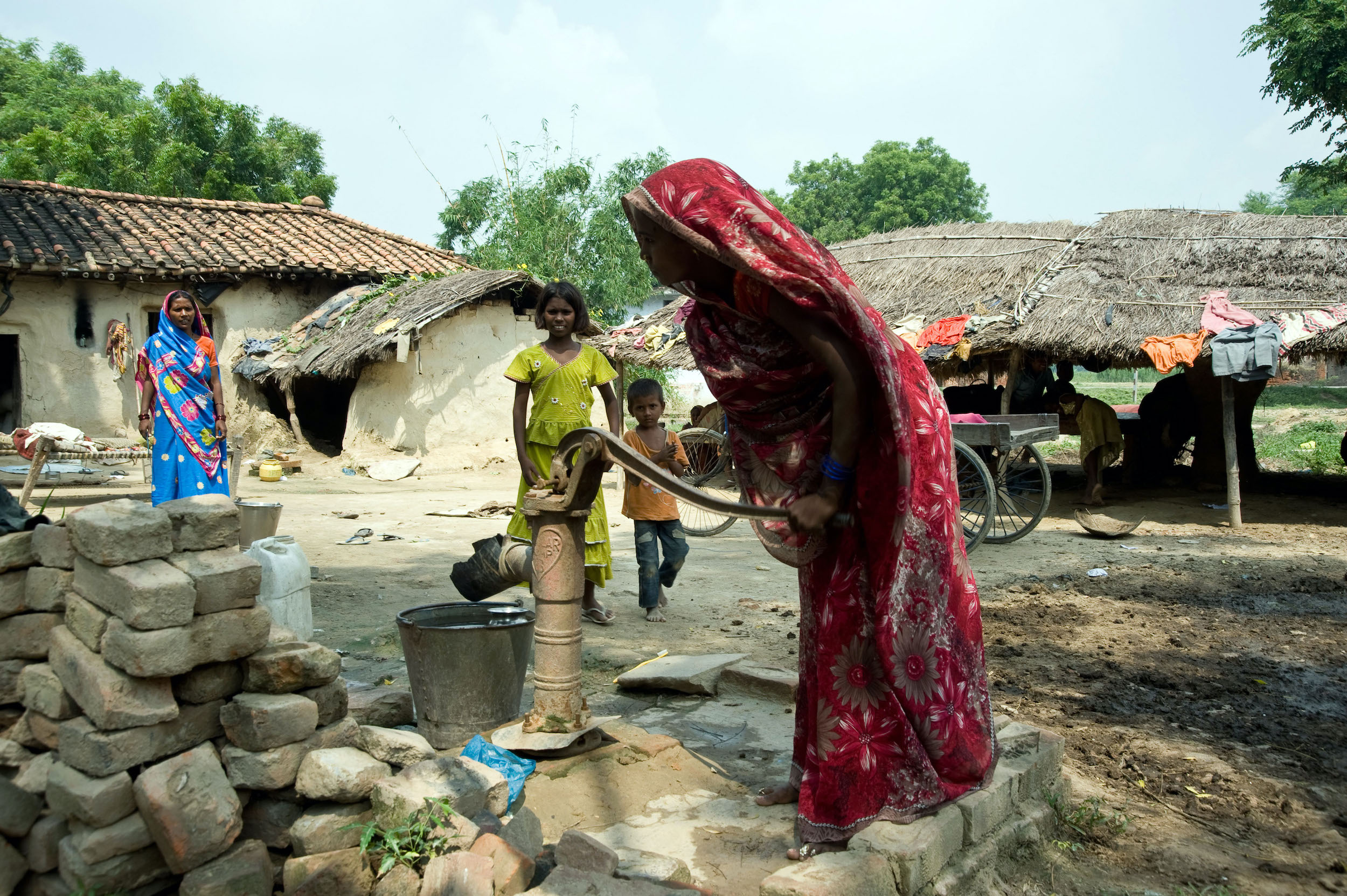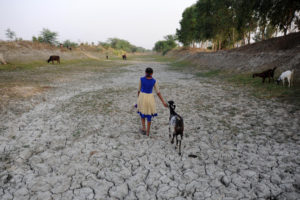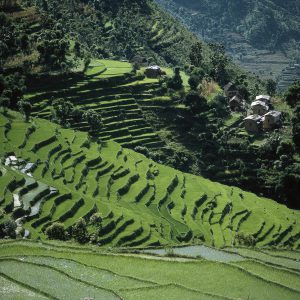As the world warms, less water is replenishing major river basins, a new study has found. This could impact water availability, with big implications for future water security. The river basins of the Himalayas are among those experiencing the largest changes, the research reveals.
Water availability depends on how much water is stored on the surface or underground in lakes, rivers and groundwater, including soil moisture, snow and ice. The movement of water into these catchment areas is called ‘water recharge’.
But rising temperatures mean more water is being lost through evaporation and absorbed by plants. At the same time, less water is entering river basins from rain and snowfall as weather patterns change. The result is lower levels of water in the basins, a trend which is expected to continue with the growing impact of climate change.
The researchers from the Indian Institute of Science and the University of New South Wales in Australia studied 31 river basins.
They calculated that the replenishment of the Irrawaddy basin fell by 39% with each degree rise in temperature, the Indus by 24%, Mekong by 15% and Ganga-Brahmaputra by 14%.
For 23 of the 31 river basins, the researchers found a decrease in recharge corresponded to an increase in temperature.
Calculating water recharge
To analyse the effect of temperature on water recharge, the researchers used satellite data to work out “terrestrial water recharge” (TWR) – the total amount of water entering all surface and subsurface storages annually. Taking into account various rates of rain and snowfall (precipitation) in different areas, the researchers then calculated the “relative recharge” rates.
They studied data between April 2002 and January 2017, comparing the relative recharge of each basin with the annual temperature.
Basins with distinct seasonal dry and wet cycles were selected, as they had clear high and low water recharge periods. For example, in India in the Ganga-Brahmaputra river basin, the dry season is between March and May, and the wet season is from June to September – when the basin is recharged.
In areas that predominantly have snowfall, recharge occurs in the winter months.
Harini Santhanam, assistant professor of the energy and environment programme at the National Institute of Advanced Studies in Bangalore, was not involved in the study. She pointed out the limits of using satellite data, adding that the results need to be verified by ground-based observations of groundwater levels.
A warning for South Asia
“These calculations are a cautionary message for us in South Asia because our use of water is high and increasing due to agriculture and urbanisation,” said Ulka Kelkar, director of the climate programme at environmental think tank the World Resources Institute, India.
She added that South Asian rivers depend on monsoon rainfall and it is uncertain how climate change will affect monsoon rainfall patterns. “But this study shows, quite simply, that in a hotter climate more water will be lost to evaporation and less will be left to replenish rivers, lakes and underground water.”
India, Pakistan and Bangladesh, together with north China, account for more than half of the world’s annual use of groundwater. The recharging of water in these countries’ river basins is crucial for agriculture, regional economies and development.
The Indus and Ganga-Brahmaputra basins support two of the world’s largest agricultural regions, but are already experiencing high groundwater stress.
Kelkar said that in the Indian state of Uttar Pradesh, in the Ganga basin, more than 70% of its replenishable groundwater has been extracted to date, as the state is densely populated and intensely farmed. Similarly Indian Punjab, in the Indus basin, extracts more than 150% of its replenishable groundwater.
“We are growing water-thirsty crops in these river basins, which will be affected by the warming-induced decline in recharge predicted by this study,” she said.
Rice is one of these thirsty crops. The world’s major rice-growing areas are in Asian river basins, including the Irrawaddy basin, most of which lies in Myanmar. Aditi Mukherjee, principal researcher at the International Water Management Institute (IWMI) in New Delhi, said, “Groundwater irrigation is becoming important in the lower Irrawaddy basin, especially for growing dry-season crops. Lower recharge rates in the basin could be a cause for concern.”
IWMI research found that groundwater recharge rates in the dry zone of central Myanmar are lower than other parts of the basin. More than 10 million people live in the country’s most water-stressed region.
Impending urban crisis
Analysis of water recharge data is important for developing sustainable groundwater management policies. “It is very important for Indian cities, which overwhelmingly depend on groundwater for meeting their needs – this study shows climate change may affect natural recharge processes,” Mukherjee said.
A recent WWF report identified about 80 Asian cities, including 30 in India, as facing severe water scarcity by 2050. Kolkata, in the Ganga-Brahmaputra basin, is one of the cities at high risk.
Mukherjee said that Kolkata, surrounded by the Ganga on one side and containing wetlands and water bodies, already has the natural infrastructure for water recharge – as do many other cities. “We only need to recognise the role of wetlands and numerous water bodies within the cities, and manage them sustainably,” she added.
Impact on vegetation
The researchers also looked at the effect of temperature-induced reduction in water recharge on vegetation growth. They selected 20 river basins where natural vegetation covered 50% or more of the area, with little snow coverage.
During dry years, there was significant reduction in vegetation growth in 18 river basins.
Kelkar said, “The Ganga-Brahmaputra and Indus basins were excluded from this analysis as they are intensively farmed or settled, but other Asian river basins like the Irrawaddy, Mekong and Amu Darya show declines in vegetation growth due to reduced water availability, raising concerns for biodiversity and agriculture.”
The researchers warned of the “loss of essential ecosystem services provided by natural vegetation” due to reduced recharge.
With some scientists projecting temperatures to rise by as much as 5C above preindustrial levels by 2100, challenges lie ahead for water availability. “The burgeoning cities in these basins need to conserve and harvest rainwater through ecological planning, investing in wastewater treatment, and countering the urban heat island effect through nature-based solutions,” Kelkar said.






![Saat mule (seven springs)—source of water for Nepal’s first hydropower project installed in 1911. Locals have built seven spouts and use this water for drinking and other purposes. Rest of the water goes to the reservoir pond [image by: Ramesh Bhushal]](https://dialogue.earth/content/uploads/2021/02/untitled-01-300x200.jpg)

![Tsering standing on an outcrop observing her pashmina goat flock [image by: Stanzin Dorjai Gya]](https://dialogue.earth/content/uploads/2021/02/DSC07391-300x200.jpg)
